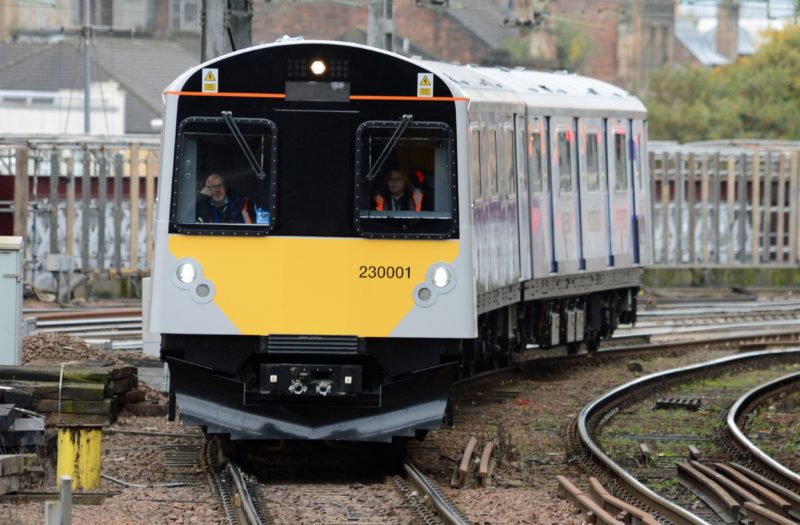On the rails, it seems that Great Western Railway is taking another step forward on its battery-only powered rail adventure, as it teams up with Vivarail.
With Great Western Railway (GWR) and Vivarail working together, they aim to bring rapid battery charging and battery-only trains to run in regular passenger service in the future.
The trial will take place on the Greenford Branch Line (that connects Greenford, South Greenford, Castle Bar Park, Drayton Green and West Ealing). This is an offshoot of the Great Western Main Line, that was not electrified. It is supported by Network Rail, to test Vivarail’s trackside fast-charging equipment in an operational setting for the first time.
The trial will due to start later this year – although no time frame has been announced.
It is hoped that the project will demonstrate that the equipment works safely and reliably in a ‘real-world’ environment.
Battery-only operations are currently constrained – mainly due to the range of the battery, as well as time to recharge batteries between uses, hence why operators are mostly favouring dual-powered options.
The Fast Charge equipment will be installed at West Ealing Station later this year and tested with Vivarail’s battery-only Class 230 train, which was first showcased at COP26 last year.
The train has a range of up to 62 miles on battery power, recharging in only 10 minutes using the Fast Charge system in off-network tests. The train line itself is approximately 3 miles long, which should allow for testing.
When the train arrives at a station it connects automatically to the Fast Charge and the batteries receive a charge while the train is prepared for its next journey.
In Quotes
Rail Minister Wendy Morton said:
“We are world leaders in developing cutting edge green technology and this new zero-emission train supports our ambitious plan to move towards net-zero carbon emissions by 2050.
“Through our Plan for Rail and the Transport Decarbonisation Plan we are making the railways the backbone of a cleaner, more environmentally-friendly and modern public transport network.”
GWR Managing Director Mark Hopwood said:
“This is a really exciting development and underlines our commitment to reduce the carbon emissions of our train fleet with a view to removing all diesel-only traction from the network by 2040, in line with the Government’s Transport Decarbonisation Plan.
“We’re looking forward to working with our rail industry colleagues over the coming months to be able to rigorously test this battery train and charger on the Greenford branch line.”
Vivarail Managing Director Steve McBride said:
“Spearheading new green technology for rail is Vivarail’s forte, so I am delighted we are working with Great Western Railway on this demonstration of battery traction and automatic fast charging. The Greenford to West Ealing line will now lead the UK in bringing in new, emission-free battery electric trains combined with our world-leading charging system.
“Battery technology has been identified as a key part of the network’s solution to reach Net Zero and it is the ability of our charging system that provides the key to replacing diesel trains.
“I believe it will mark a step-change in showing the innovation within our industry. The support from GWR, Network Rail and the DfT to get this under way has been phenomenal.”
Network Rail’s Regional Managing Director for Wales and Western, Michelle Handforth, said:
“We are really excited for this new battery-powered trial to start and it highlights our commitment to providing a more environmentally-friendly way to travel.
“It builds on the success of electrification of the Great Western Mainline which has hugely reduced the number of journeys being made in diesel-only traction.
“We’re now looking forward to the challenge of getting the Greenford branch line ready for this new trial, which is another significant step forward for rail travel.”
Stepping up the battery-only game
With the rail industry being forced to start stepping away from traditional diesel-powered for non-electrified lines, operators, manufacturers and governments are seeking different ways to power trains
Projects include hydrogen power, dual-mode/tri-mode operation.
In an ideal world, electrification (both brand new lines and infill schemes) would be the answer – however, there is the issue of the cost of installation, maintenance costs, as well as the return on investment has to be brought into consideration.
Branch lines like the Greenford line don’t stand a chance in this context.
For branch lines, high speed battery recharging technology, as well as new-generation lightweight units could be the solution that is needed to ensure their survival, as the industry grapples with how it will get rolling stock going onwards.
Timelines will also be key, as well as further applications
The timelines will be key, as the UK moves in the world of “Great British Railways”, as the knowledge to take things forward will be needed.
There’s also the question of the rolling stock too and if the technology from the demonstration until (an upcycled D78 Underground train). Whilst the upcycling is to be commended, there are lots of modern rolling stock options out there that in theory could take advantage of the technology.
How portable this technology will be in the future will be one ways this project could be judged as successful.
Welcome to Economy Class and Beyond – Your no-nonsense guide to network news, honest reviews, featuring in-depth coverage, unique research, as well as the humour and madness as I only know how to deliver.
Follow me on Twitter at @EconomyBeyond for the latest updates! You can follow me on Instagram too!
Also remember that we are part of the BoardingArea community, bringing you the latest frequent flyer news from around the world.
